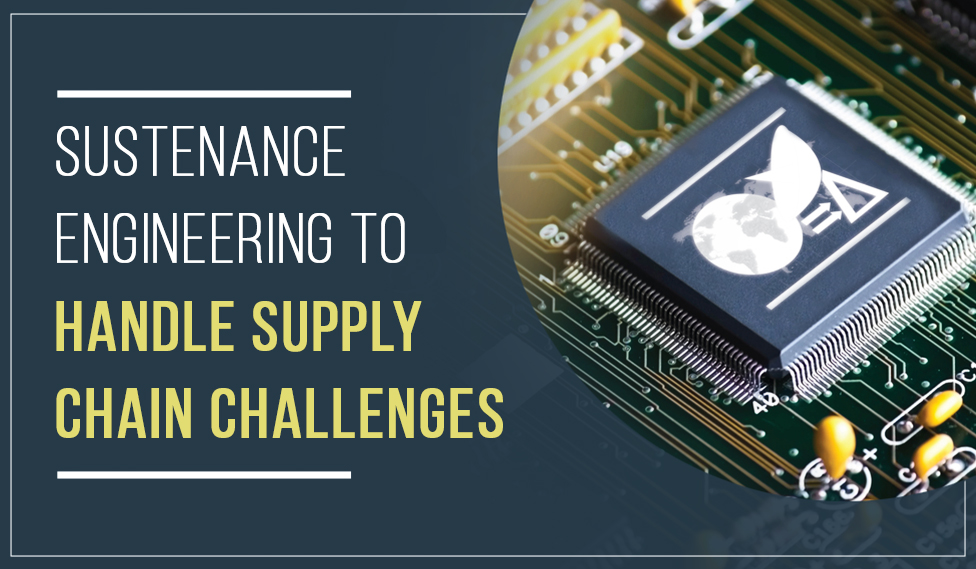
Are You Struggling With Parts Shortage In Your Electronic Product Manufacturing? How Sustenance Engineering Can Handle Supply Chain Challenges Efficiently:
Global electronic supply chain is going through one of the most difficult times in history. Parts shortages, long lead times and rising cost of components has made several organizations into tougher situations. Product manufacturing has come to a halt for several companies due to chip and component shortages. This has affected sales plans, growth plans, strategy, and new product development for several companies.
The main challenges on the electronic supply chain today are:
- Lack of Materials: Components which are needed for your product are in shortage across countries. Your regular suppliers are not able to supply them or take new orders or fulfill existing orders.
- Excessive lead time: Most component lead time has become 52 weeks plus. Several chip manufacturers are not taking new orders because of back orders
- Limited PCBA manufacturing service: Most contract manufacturers are avoiding risk by taking up projects where parts are available or already in their inventory. So several new product manufacturers are not able to get the reliable PCBA manufacturers who can source materials faster in the market.
- Cost: Component prices have been rising for the past several months. Due to shortage of materials in the market, lot of suppliers are selling parts with a premium which could be 300%-500% more than the actual price
Navigating such a situation needs careful decisions taken very quickly. This requires the supply chain to quickly decide and buy parts at an affordable price from available sources. Most companies are not these agile and struggle to take a large cost impacting decision in a few days. Mostly companies use the following strategies to handle this situation:
- Plan in advance
- Choose easily available materials in your products
- Select and engage a contract manufacturer from early stage of design itself
- Ensure your CM has a proper supply chain strategy
- Avoid rare parts in your designs
- Work with long term trusted suppliers who value your business
- Buy directly from manufacturer and pre-pay if possible
- Buy from reliable hard to find part suppliers at higher price
- Buy parts in bulk and keep for your next production run
Sustenance Engineering:
Another important way to tackle this problem is with the help of your engineering team. Your sustenance engineering team becomes one of the most important functions to handle this scenario. A sustenance engineering team should consist of circuit design engineers, hardware designers, PCB designers, embedded engineers and component engineers.
Component engineering is an important function which will verify the parts in the current BOM and confirm its cost and availability. Parts will be classified as low, medium, and high risk based on multiple factors.
Medium and high-risk parts will be handled with a multi-pronged strategy. Identifying Form, Fit and Function (FFF) replacement parts if possible, from the same manufacturer becomes the first step. If it is not available from the same manufacturer, then looking for alternatives from other manufacturers becomes the next step.
If FFF alternates are not available identifying functional alternates from any other reliable manufacturer is the next step. Functional replacement could be an upgrade part, downgrade part or with the same function with change in fitment. Component engineer and hardware/PCB engineer can decide which part is low risk to replace in the design and the impact of that change in the schematic and board.
With the approval from the supply chain, these parts will be replaced in the board and a new PCB will be generated. An efficient PCB design service will become useful during this stage. Several cases, it may also involve updating software to ensure proper functionalities.
The key in the process is to identify the changes which are viable in cost and cycle time. Also these changes should ensure the long-term sustenance of the product. Sustenance engineering needs efficient co-ordination between multiple departments and management.
Sunstream with its years of experience in sustenance engineering has assisted several companies to manage their product development and production in these challenging situations. Our component engineering, supply chain support, hardware engineering, PCB design services and embedded software development services teamwork goes hand in hand to provide you the best available solution in short turnaround time and lowest cost.



 +1.585.935.7123
+1.585.935.7123 +91-804-148-6861
+91-804-148-6861